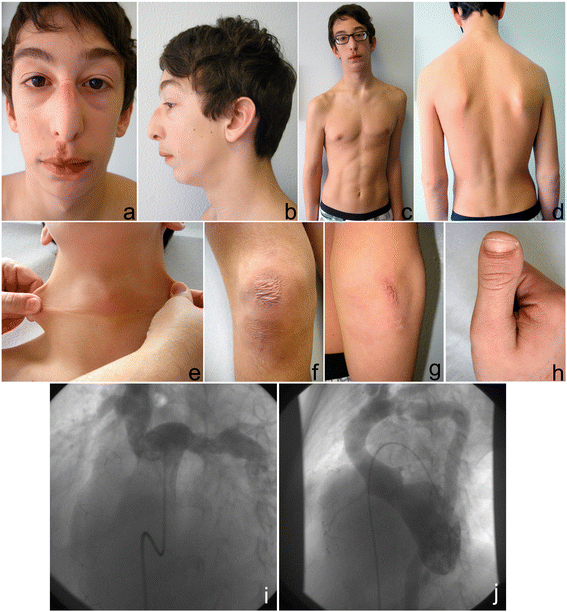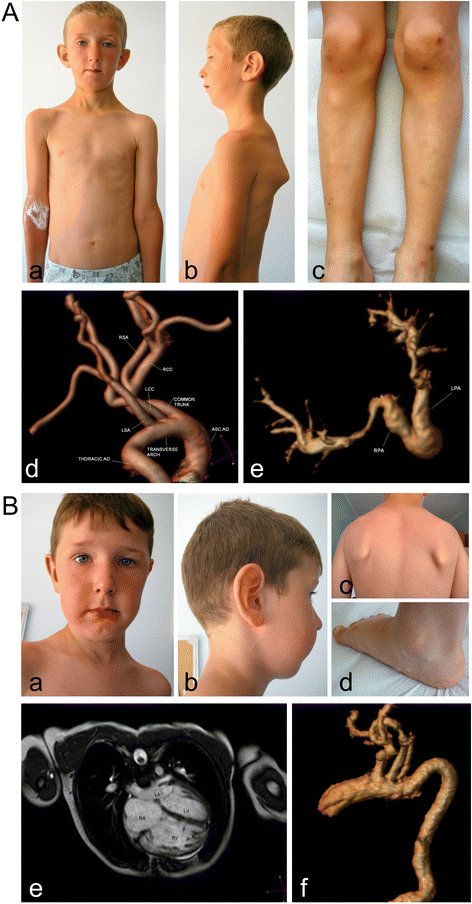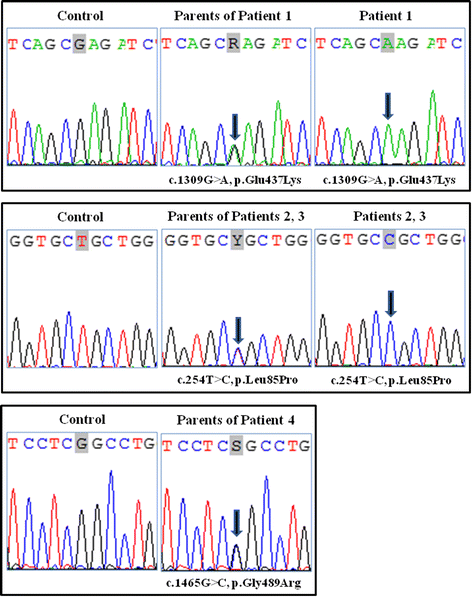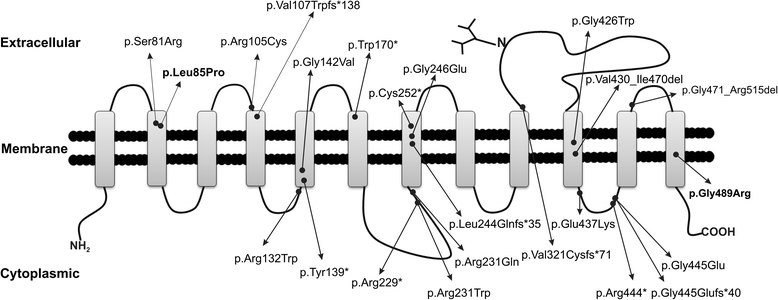Arterial Tortuosity Syndrome: homozygosity for two novel and one recurrent SLC2A10 missense mutations in three families with severe cardiopulmonary complications in infancy and a literature review
- PMID: 25373504
- PMCID: PMC4412100
- DOI: 10.1186/s12881-014-0122-5
Arterial Tortuosity Syndrome: homozygosity for two novel and one recurrent SLC2A10 missense mutations in three families with severe cardiopulmonary complications in infancy and a literature review
Abstract
Background: Arterial Tortuosity Syndrome (ATS) is a very rare autosomal recessive connective tissue disorder (CTD) characterized by tortuosity and elongation of the large- and medium-sized arteries and a propensity for aneurysm formation and vascular dissection. During infancy, children frequently present the involvement of the pulmonary arteries (elongation, tortuosity, stenosis) with dyspnea and cyanosis. Other CTD signs of ATS are dysmorphisms, abdominal hernias, joint hypermobility, skeletal abnormalities, and keratoconus. ATS is typically described as a severe disease with high rate of mortality due to major cardiovascular malformations. ATS is caused by mutations in the SLC2A10 gene, which encodes the facilitative glucose transporter 10 (GLUT10). Approximately 100 ATS patients have been described, and 21 causal mutations have been identified in the SLC2A10 gene.
Case presentation: We describe the clinical findings and molecular characterization of three new ATS families, which provide insight into the clinical phenotype of the disorder; furthermore, we expand the allelic repertoire of SLC2A10 by identifying two novel mutations. We also review the ATS patients characterized by our group and compare their clinical findings with previous data.
Conclusions: Our data confirm that the cardiovascular prognosis in ATS is less severe than previously reported and that the first years of life are the most critical for possible life-threatening events. Molecular diagnosis is mandatory to distinguish ATS from other CTDs and to define targeted clinical follow-up and timely cardiovascular surgical or interventional treatment, when needed.
Figures




References
-
- Coucke PJ, Willaert A, Wessels MW, Callewaert B, Zoppi N, De Backer J, Fox JE, Mancini GM, Kambouris M, Gardella R, Facchetti F, Willems PJ, Forsyth R, Dietz HC, Barlati S, Colombi M, Loeys B, De Paepe A. Mutations in the facilitative glucose transporter GLUT10 alter angiogenesis and cause arterial tortuosity syndrome. Nat Genet. 2006;38:452–457. doi: 10.1038/ng1764. - DOI - PubMed
-
- Callewaert BL, Willaert A, Kerstjens-Frederikse WS, De Backer J, Devriendt K, Albrecht B, Ramos-Arroyo MA, Doco-Fenzy M, Hennekam RC, Pyeritz RE, Krogmann ON, Gillessen-kaesbach G, Wakeling EL, Nikzainal S, Francannet C, Mauran P, Booth C, Barrow M, Dekens R, Loeys BL, Coucke PJ, De Paepe AM. Arterial tortuosity syndrome: clinical and molecular findings in 12 newly identified families. Hum Mutat. 2008;29:150–158. doi: 10.1002/humu.20623. - DOI - PubMed
Publication types
MeSH terms
Substances
Supplementary concepts
Grants and funding
LinkOut - more resources
Full Text Sources
Other Literature Sources
Medical

